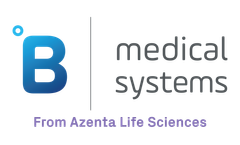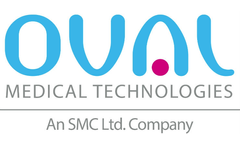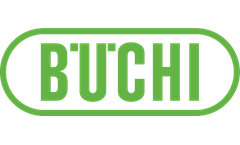Pharmaceutical And Medical Technology Articles & Analysis: Older
19 articles found
The field of pharmaceuticals has seen rapid advancements in drug delivery technologies in recent years, one of which is long-lasting controlled-release microspheres technology. ...
In the pharmaceutical world, the medical cold chain stands as a critical link in the journey of temperature-sensitive products from manufacturers to patients. ...
In this article, Barbara Lead, Chief Executive Officer of Cambridge Pharma and Oval Medical Technologies, outlines the sustainability efforts undertaken by SMC Group associated companies, including facilitating the transition from hospital to at-home treatment and investment in greener facilities. At the 2021 COP26 summit in Glasgow, further cuts to carbon dioxide emissions were agreed to ...
Come and see an automated biologics processing unit in operation at a one-day Symposium “Integrated Process Strategies For Regional Biopharmaceutical Supply” on March 28, 2023, Sedgefield, UK. Looking back down the race circuit, the horses don’t seem to be moving quickly – until they come thundering past you, covering twice my height in one effortless stride. We can ...
The drug developer's latest capital raise, a $150 million private placement, comes during a difficult market environment. The strongest companies can raise money in any environment. Recursion Pharmaceuticals (RXRX) - Get Free Report recently raised $150 million in gross proceeds from a private placement of common stock, including half from a single fund that has never before invested in the ...
Excipients are very important for pharmaceutical preparations. It can be said that without excipients, there will be no pharmaceutical preparations, let alone different pharmaceutical dosage forms such as powders, granules, tablets, oral liquids or injections. When the drug and the appropriate excipients are combined into a specific dosage form, the drug would become safer, more stable and more ...
Excipients are very important for pharmaceutical preparations. It can be said that without excipients, there will be no pharmaceutical preparations, let alone different pharmaceutical dosage forms such as powders, granules, tablets, oral liquids or injections. When the drug and the appropriate excipients are combined into a specific dosage form, the drug would become safer, more stable and more ...
Cindy Shu is joining Regeneus for a 12-month project focused on readying Progenza™ for Phase II trials in Japan and the U.S. A Medical Research Future Fund initiative, the grant provides financial support to Australian, international and/or multinational medical technology and pharmaceutical companies to bring the best ...
“The BUCHI Encapsulator B-395 Pro is the instrument of choice on the market for the sterile encapsulation of cells into polymeric beads and capsules, and is integretable into a GMP process.” Customer name Prof. Bice Conti Company / Institution Université de Pavia, Lab. Pharmaceutical Technology and Law (PT&L), Dept. Drug Sciences, Italie Product lines Spray Drying and ...
ByBUCHI
The issue of assessing technology for business application remains a foremost concern for managers in industry. Many managers know that there is something unsatisfactory about the standard use of Discounted Cash Flow (DCF) techniques, particularly when there is high uncertainty and a need for strategic flexibility. However, whatever the lack of hard data, it is also unsettling to rely on pure ...
Research of the strategic aspects of the generic pharmaceutical industry in Central and Eastern Europe (CEE) suggests that generic pharmaceutical companies have neglected technological innovation capability, market orientation and performance and have underestimated the process of globalisation. This has resulted in deteriorated performance and lost competitiveness. A recommended approach to ...
This paper analyses the changing R&D process at Japanese pharmaceutical companies, based on a questionnaire survey as well as structured interviews at large Japanese pharmaceutical companies. Japanese pharmaceutical companies have recently engaged in active R&D collaborations with other firms and universities. This paper identifies the factors underlying this trend, finding that all three factors ...
This paper shows the post-TRIPS experience to be contradicting the overstated claim that "the adverse effect of TRIPS Agreement on prices of patented medicines would be adequately compensated by the benefits of technology transfer and domestic R&D". It argues that policymakers cannot continue to formulate their strategic interventions with an understanding that "strong IPRs are ...
This paper examines statistical differences and determinants of labour productivity, and export, skill and technological intensities between foreign and local auto parts, electronics, food, pharmaceutical and garment firms in South Africa. Foreign firms enjoyed higher labour productivity, and export, overall technology, process and R&D intensities than local firms in pharmaceuticals, and export, ...
The effectiveness of technology management is fundamentally influenced by the quality of a firm's technology intelligence process, i.e. the acquisition and assessment of information on technological trends. Although there is a vast literature on different technology intelligence methods, there is a lack of research on the factors influencing the choice of appropriate technology intelligence ...
The paper explores two emerging trends in biotechnology networking: the role of strategic partnering activity in the formation of knowledge-based networked oligopolies particularly in the pharmaceutical industry and the extension of partnering activity in biotechnology from advanced industrial to Third World countries. Both trends, it argues, bear further examination by both researchers seeking ...
Trade liberalisation and proposed changes in the IPR has ushered in new dynamics in the Indian Pharmaceutical industry. Referring to theoretical debate on industrial organisational policies, the pharmaceutical industry is moving towards consolidation and augmentation, thus towards a "new industrial order". The pharmaceutical industry's adaptation to change, as shown in this article, is ...
In this paper, we analyse the relationships between technological regimes, regimes of local interaction, and the global structure of an industrial network. Given the complexity of the task, we follow a semi-inductivist approach, combining quantitative empirical analyses and simulative exercises. We show that the topological properties of the R&D network in pharmaceuticals are the result of ...
In this paper, preliminary results of a research project on strategies of drug delivery companies (DDC) are presented to discuss the changing role of technology suppliers in the pharmaceutical industry. Changes in the pharmaceutical industry are presented briefly and related to developments in the drug delivery industry. The early observations are contrasted with existing views from the ...









